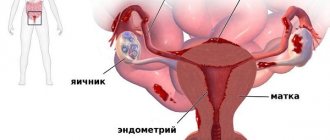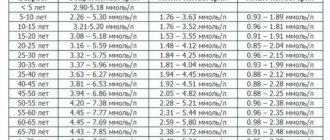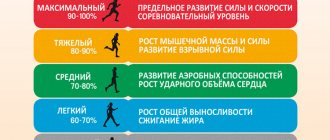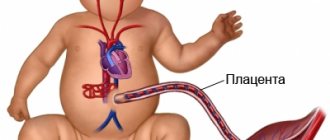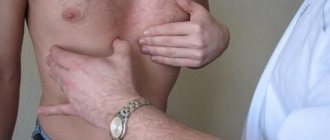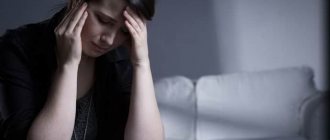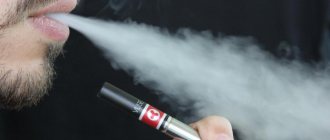Home / Pathologies / Snoring
Back
Published: 10/18/2020
0
1702
Those who have ever experienced a sudden attack of suffocation in a dream understand how scary it is. A person is overcome by fear and feels absolutely helpless. Panic begins from the feeling of lack of air. Sleep is disturbed due to fear of suffocation; there is a feeling that someone is pressing on the chest. When you fall asleep, you don’t have enough air or you jump up in the middle of the night from a rapid heartbeat and the feeling that you are suffocating – it doesn’t matter, you urgently need to look for the cause of this condition and take action. To do this, you cannot avoid visiting a doctor.
- 1 The most likely causes of suffocation in sleep
- 2 Sleep apnea due to serious pathologies
- 3 Symptoms of suffocation
- 4 Diagnosis of pathological syndrome
- 5 Providing first aid during an attack
- 6 Basic methods of therapy
- 7 Prevention of attacks
The most likely causes of suffocation in sleep
During night sleep, the oxygen content in the blood drops sharply and the concentration of carbon dioxide rises, which causes suffocation during sleep. If breathing is impaired, then you can suspect the presence of serious problems in the body.
If such an unpleasant attack occurs only occasionally, then the reason may lie in physical overexertion and stress. Periodic cessation of breathing during sleep is an alarming signal that requires immediate attention from doctors.
Possible causes of nighttime suffocation include the following:
- Obesity. If there is a large amount of excess fat, the diaphragm is compressed, which leads to a decrease in the space for the lungs. It becomes impossible to take a full breath.
- Acid reflux provokes heartburn; when lying down, stomach contents are released, which rolls up to the throat, blocking the airways. It becomes difficult to breathe and coughing appears as a protective reflex to free the larynx.
- Excessive use of cigarettes, especially smoking before bed. Nicotine, entering the blood, increases blood pressure, increases heart rate, and increases the risk of suffocation. Breathing is blocked for literally a few seconds; there is no danger to life, but discomfort is guaranteed.
- Deviations in the alternation of sleep rhythms can cause difficulty breathing.
- Pregnancy is a harmless reason, but it gives a woman unpleasant sensations. Weight gain occurs, which can cause suffocation.
- If asthma attacks occur at night, the cause may be pathologies of the nervous system. Often this symptom occurs with VSD; manifestations of pathology are most acutely felt during periods of hormonal changes, against the background of overwork. The first signs of the disease resemble neurosis, and then the condition worsens and now at night there is difficulty breathing, panic, and increased sweating.
- Accumulated mucus in the nasopharynx can also block the throat from free air movement. This symptom interferes with normal sleep, but the use of medications will quickly eliminate it.
The listed reasons do not require serious treatment and are easily removable or temporary, which does not pose a danger to human health and life.
Reasons for the development of pathology
There are many factors that provoke attacks of cardiac dyspnea - congenital anomalies and acquired diseases, the risk of developing which increases with the patient’s age. Among the reasons for the progression of cardiac asthma are:
- heart defects;
- cardiomyopathy;
- heart failure;
- inflammatory processes (pericarditis, myocarditis);
- coronary syndrome;
- cardiac tamponade.
Thrombophlebitis of deep veins can provoke difficulty breathing. Blood clots that arise in the extremities can move into the main pulmonary vessel and block its lumen, causing necrosis of a section of the lung.
Sleep apnea due to serious pathologies
Many people complain to the doctor that I suffocate in my sleep. If this happens with enviable regularity, then the reason may be serious diseases that require medication and sometimes surgical treatment. These include:
- Bronchial asthma. Attacks of the disease can occur not only at night, but during sleep it is most dangerous. Any allergen to which the patient’s body reacts can provoke bronchospasm. An allergy can be to house dust, animal hair, the smell of household chemicals or perfumes. Breathing is characterized during attacks by a sharp inhalation and a prolonged exhalation with a whistle. This diagnosis requires the presence of medications nearby to quickly stop the attack.
- Sleep apnea. The syndrome develops due to loss of muscle tone in the palate. This occurs against the background of age-related changes, obesity, and chronic fatigue.
- Arrhythmia. There is a rapid pulse, pain in the heart, shortness of breath, and weakness. During an attack, a person may suffocate in their sleep.
- Heart failure. The heart cannot pump blood normally and, as a result, gas exchange is disrupted and oxygen deficiency appears in the tissues, which leads to respiratory arrest. There is a danger of dying in this state.
- Angina pectoris. Most often, an attack of pathology is observed against the background of daytime physical fatigue or neuro-emotional stress. There is pain behind the sternum, shortness of breath. Tachycardia may be observed.
- Pneumonia. At its peak, pneumonia makes breathing significantly more difficult, which can cause a feeling of suffocation.
- Thyroid diseases. When the thyroid gland is not functioning sufficiently, its tissues grow and a goiter appears, which puts pressure on the trachea. If you lie on your back, you get the feeling that someone is choking you and a lump comes to your throat.
- Panic attack. Mental disorders and instability of processes in the nervous system lead to suffocation in sleep due to rapid heartbeat and panic.
- Sleep paralysis. Develops at the moment of emerging from sleep. It becomes difficult to breathe, anxiety and fear appear, which paralyzes. In severe cases, hallucinations may develop. If you realize that the condition is not dangerous to health, then literally in a couple of minutes everything will return to normal. The areas of the brain responsible for movement will finally wake up and send the necessary signal.
All of the listed pathologies should not be ignored by doctors. Serious treatment is required to prevent tragic consequences.
Causes of lack of air
Lack of air during sleep can be caused by a variety of reasons.
Experts identify several reasons that can provoke a feeling of lack of air at night:
- Chronic heart failure. The cause of this pathological condition is most often coronary disease, in which the organ loses its ability to fully pump blood. As a result, stagnation occurs in the venous part of the pulmonary circulation, and there is a feeling of lack of air at night. In medical practice, experts call this condition cardiac asthma. In severe chronic heart failure, lack of air is also observed during the day, but at night it noticeably intensifies. This is explained by the fact that in a lying position, a redistribution of fluid occurs in the human body, and it partially passes from below to the upper part of the body. With this pathological condition, the pressure in the capillaries of the lungs increases, gas exchange is disrupted, and the person experiences a feeling of lack of air along with breathing problems. Cardiac asthma is dangerous because it can cause pulmonary edema and, if effective medical care is not provided, lead to suffocation.
- Bronchial asthma. Lack of air at night can manifest itself in a patient as an attack of bronchial asthma, which is considered an allergic pathology. With this pathology, the patency of the bronchi is seriously impaired, and the consequence of this is the appearance of a dry cough or shortness of breath in a person. During attacks, shortness of breath increases significantly and gradually gives way to suffocation. This pathological condition requires a person to immediately take bronchodilators.
- Excess weight. If you are overweight, your internal organs become covered with fat, which seriously impairs their normal functioning. Lack of air at night is complicated by the fact that the stomach puts pressure on the diaphragm and presses its top. This significantly limits the space available to the lungs and increases the lack of oxygen.
- Arrhythmia. Shortness of breath at night can be caused by attacks of atrial fibrillation. With this pathological condition, chaotic excitation of the muscle fibers of the atria is observed, which makes the pulse irregular. The causes of arrhythmia are stenosis, myocardial infarction, thyrotoxicosis, diabetes mellitus and obesity.
- Sleep apnea syndrome. With a decrease in muscle tone, the lumen of the pharynx may close. Breathing problems can occur with extra pounds on the body, taking sleeping pills, alcoholic drinks, or hypertrophy of the tonsils. Often a person is not even aware of his problem. In patients with apnea syndrome, the likelihood of developing cardiac ischemia and death increases significantly.
Lack of air at night can occur after a stressful situation or severe physical exertion. During emotional stress, adrenaline is released into the blood, which increases the capacity of the lungs.
As a result, they begin to pump a larger volume of air than in the usual mode. Experts call this condition hyperventilation, and it is not considered pathological if it is not accompanied by panic attacks.
Dangerous symptoms
Does shortness of breath occur with a certain frequency? - We need a doctor!
In a situation where a person is periodically bothered by lack of air at night, it is recommended to seek advice from a specialist.
The patient will have to explain when he has an attack - on inhalation or exhalation. This will allow the specialist to determine the cause that caused the lack of air at night.
The following symptoms of suffocation are distinguished:
- At the first stage of suffocation, increased functioning of the respiratory center is observed. The patient's breathing depth increases, blood pressure increases, dizziness begins, and the heart rate increases.
- In the second phase, breathing becomes shorter, heart contractions slow down significantly, the fingers of the lower extremities, lips and the tip of the nose turn blue.
- The next phase is the cessation of functioning of the respiratory center, that is, the patient stops breathing for 3-5 seconds. In some situations, breathing may be absent for several minutes. Muscle contractions, limb cramps occur, blood pressure decreases, and almost all previously formed reflexes are lost.
- At the final stage, the person stops breathing, but there is a clearly visible chaotic rhythm. Short inhalations and exhalations alternate with deep and infrequent breathing.
If you experience persistent shortness of breath during sleep, you must consult a specialist to make a diagnosis and prescribe the necessary treatment.
Symptoms of suffocation
Symptoms of night suffocation gradually replace each other; the attack goes through several stages in its development:
- During the first phase, the work of the respiratory center increases. The frequency and depth of breathing increase, blood pressure rises, and the heart begins to beat faster. There is a risk of developing a stroke or heart attack.
- At the second stage, breathing slows down, the skin acquires a bluish tint, and the lips turn blue.
- Next, a malfunction in the functioning of the respiratory center begins to occur. Breathing is delayed, convulsions appear, and a sharp drop in blood pressure occurs.
- In the fourth phase, the heart rhythm is disturbed, a sharp inhalation and rare exhalation are observed.
Death from suffocation is quite possible, especially if there are serious pathologies of the cardiovascular system.
Symptoms of night suffocation
During this condition, a person cannot speak because speech requires air to pass through the vocal cords.
But during an attack this is impossible. At this moment, it is important that those around you, if anyone is nearby, know what an attack looks like and can help the person. It looks like this:
- the skin becomes pale, but a blush remains on the cheeks;
- the nasolabial triangle turns blue along with the fingers;
- Fear appears on the patient’s face, he tries to inhale air, but he does not succeed or succeeds with great difficulty;
- the pulse quickens, the face becomes covered with sweat;
- depressions form in the spaces between the ribs;
- Veins swell in the neck.
- If you listen to the lungs at this time, you can hear noises with wheezing.
If the patient cannot cope on his own and no one helps him, the consequences can be sad. A person will suffocate in a few minutes.
Diagnosis of pathological syndrome
To prescribe treatment, the doctor must find out the cause of such conditions, and for this it is necessary to conduct an examination of the patient, which includes:
- blood and urine tests;
- X-rays of light;
- bacteriological examination of sputum;
- cardiogram;
- tests to determine the allergen;
- analysis to determine lymphocytes in the blood and their activity;
- spirography;
- tomography;
- To assess the functioning of the body during sleep, polysomnography is performed.
To clarify the diagnosis, differential diagnosis is important to exclude diseases with similar symptoms. Please pay attention to the following points:
- Asthma and obstructive bronchitis may have similar symptoms, but with the first pathology, wheezing in the lungs is dry, and with bronchitis, it is wet. In addition, with bronchial disease, shortness of breath is constantly observed.
- Pulmonary thromboembolism can be distinguished by a sudden feeling of lack of air. An attack can occur at any moment, not just at night.
- A feeling of lack of air, as a sign of neurosis, almost never ends in suffocation. Most often, such manifestations are observed after stress; wheezing is not detected in the lungs when listening.
After determining the cause, the doctor can prescribe effective therapy for the underlying disease that provokes such attacks.
What is suffocation
This is a condition where there is a sudden lack of oxygen. It can occur due to spasms caused by external irritants. An attack of suffocation at night takes a person by surprise. Waking up from lack of air, he does not understand what is happening and why this happened to him. Panic fear is added to the lack of air, and the condition can become even worse.
Such seizures can be a sign of many serious diseases. Therefore, if this happens at least once, it is necessary to inform the doctor about it.
Providing first aid during an attack
Regular attacks of suffocation can result in coma or death of a person, so when the first symptoms appear, you should call a doctor. Assistance actions should include the following:
- Try to calm the person down.
- Help him take a sitting position and provide fresh air, if necessary, open the window.
- If there is a diagnosis of bronchial asthma, then it is necessary to give Eufilin.
- If an allergy is the culprit of the attack, then take an antihistamine, for example, Diazolin, Clarotadine.
- If choking is observed against the background of heart failure, then the drug “Nitroglycerin”, a warm foot bath, and blood pressure medications will help.
During an attack at night, you should not give a person anything to drink; the muscles of the pharynx are in a tense state, which can cause a new attack.
If you see that a loved one nearby begins to gasp for air, breathes heavily and periodically interrupts, then you need to wake him up, help him sit up and provide assistance.
Prevention measures
To avoid the development of nocturnal shortness of breath, it is necessary to promptly treat cardiac pathologies and prevent complications from occurring. Doctors recommend following a number of simple rules:
- completely stop smoking;
- normalize weight;
- try to eliminate contact with the irritant that causes bronchospasms (wool, feathers, dust, pollen, certain foods);
- exercise regularly;
- take daily walks;
- master diaphragmatic breathing (breathe with your stomach).
The best sports activity for those suffering from shortness of breath is swimming. In a pool or on a pond, he inhales moist air, which is beneficial for the lungs.
It has been proven that having problems with night breathing doubles the likelihood of sudden death. If you have difficulty falling asleep or if you experience painful shortness of breath at night, you must carefully examine the respiratory organs, blood vessels, and heart, identify the pathologies that provoke the symptoms and immediately begin their treatment.
Basic therapy methods
The choice of methods for treating suffocation depends on the cause of this condition, but most often you can rely on the following:
- Drug therapy. Medicines are selected taking into account the underlying disease. If you have an allergic attack, then antihistamines should be on hand. For pathologies of the heart muscle, medications prescribed by the doctor to relieve pain and lower blood pressure.
- Homeopathic remedies can also come to the rescue. When a person falls asleep and wakes up in the middle of the night with a feeling of suffocation, you can try taking a course of Ipecacuanha. If the attack is caused by neurosis and problems with the nervous system, then Moschus will help. Shortness of breath due to an allergic reaction can be combated with Sambucus. Treatment with homeopathy must be combined with the use of medications and traditional medicine.
- Treatment with folk remedies. But you shouldn’t start with it; when there is a serious pathology, you can’t do without medication. Medicinal herbs can only serve as a preventive measure. The following have proven themselves to be excellent in this capacity:
- Rose hip decoction containing a large amount of vitamins and antioxidants.
- A decoction of strawberry leaves reduces blood pressure.
- A decoction of wild rosemary has an antiallergic effect.
- Massotherapy. It relaxes well, relieves tension, preventing attacks of suffocation due to nervousness. If you do it regularly before bed, you can reduce the frequency of attacks.
- Breathing exercises. A set of exercises will help train the respiratory muscles, which will develop the ability to relieve a sudden attack.
- Physiotherapeutic procedures. A good effect is achieved by: ultrasound therapy, UHF, inductothermy, electrophoresis.
If falling asleep is associated with a feeling of suffocation, then treating the problem must be approached in a comprehensive manner. If the situation requires it, then you should not refuse hospitalization; the clinic will provide a course of treatment for the underlying disease, which will significantly reduce the likelihood of death from suffocation. And such an outcome is not excluded, especially in a situation where there is no effective remedy at hand.
Principles of therapy
Treatment of nocturnal shortness of breath is primarily aimed at eliminating the causes that caused it. In therapy, medications, surgical methods and traditional medicine recipes are used. The patient should adhere to a special diet, maintaining an optimal balance of work and rest.
Drug treatment
To relieve the symptoms of shortness of breath, you need to influence the causes of the underlying diseases.
Medicines used in the treatment of cardiac asthma
| Drugs | Impact |
| Diuretics (Torasemide, Furosemide) | Relieves swelling, reduces blood pressure and stress on the heart muscle |
| ACE inhibitors (Quinapril, Ramipril) | Improve blood flow, lower blood pressure |
| Sartans (Eprosartan, Losartan) | Lower blood pressure |
| β-blockers (Acekor, Metoprolol) | Lower blood pressure, reduce strength, heart rate |
| Aldosterone blocking agents (Aldactone, Spironolactone) | They have a diuretic, potassium-sparing effect, lower blood pressure |
| Cardiac glycosides (Strophanthin K, Digoxin) | Tones the heart, normalizes metabolic processes, eliminates blood stagnation |
| Antiarrhythmic drugs (Diltiazem, Amiodarone) | Normalizes the rhythm of heart contractions |
If a patient has difficulty breathing at night, he is prescribed oxygen therapy in an inpatient setting. Oxygen is supplied through special tubes or a mask. The duration of exposure is determined individually.
Surgery
If drug therapy for nocturnal shortness of breath does not bring the desired result, surgical intervention is performed. It is highly effective, but the operation requires preparation of the patient. Depending on the severity of cardiovascular pathologies, the following may be used:
- coronary bypass surgery (normalization of blood flow in the arteries of the heart). Installed shunts allow blood to bypass the damaged area of the vessel;
- replacement or restoration of the valve (radical elimination of heart disease) with artificial or natural materials;
- pacemaker (installation of a special device that supports cardiac activity). There are external (rarely used) and internal stimulation.
As a last resort, a heart transplant is used.
Heart transplantation is indicated if it is impossible to cure the disease and save the patient’s life by other means.
Traditional methods of therapy
An integrated approach to the treatment of nocturnal shortness of breath involves the use of folk remedies:
- hawthorn – helps normalize blood flow, tones blood vessels, lowers blood pressure and cholesterol levels in the blood. Used in the form of balm, juice, decoction, infusion;
- fish oil – lowers heart rate, prevents heart attacks;
- valerian root - soothes with pronounced heartbeat and pain of a cardiac nature;
- lemon balm, mint - have a soothing and anti-inflammatory effect, dilate blood vessels, lower blood pressure;
- calendula – lowers blood pressure, normalizes the rhythm and frequency of the heartbeat.
Independent use of folk remedies can cause the opposite effect. Before using them, you should consult a specialist.
Seizure prevention
For adult patients who are at risk for developing sleep apnea, preventive measures are important, these include:
- Regular wet cleaning.
- Remove all objects and things that accumulate dust from the bedroom.
- Before going to bed, you need to ventilate the room.
- Nutrition should be balanced.
- Lead a healthy lifestyle.
- Eliminate bad habits.
- Visit your doctor regularly and take medications if you have serious chronic pathologies.
Almost everyone can wake up in the middle of the night from unpleasant sensations in the chest, some discomfort and a feeling of tightness in the chest, but if such symptoms accompany them regularly, then they cannot be ignored. This could end badly.
Symptoms of the condition
Shortness of breath caused by the development of cardiac pathologies is usually accompanied by:
- pallor;
- cyanosis;
- cough;
- hemoptysis;
- increased breathing;
- increased urine output;
- swelling;
- loss of consciousness.
Sometimes at night there is a feeling of heaviness in the chest or pain radiating to the lower jaw, arm, shoulder (usually the left).
First aid for eliminating an attack of suffocation at night
As a rule, night attacks occur away from the hospital. And it’s good if at this moment someone is next to the patient and knows how to provide him with first aid. What to do to help a person in such a situation? You must adhere to the following algorithm:
- First of all, you need to call an ambulance.
- Before the doctors arrive, you need to help the patient rise to a vertical position, sit down, or better yet stand up. Try to calm him down.
- Give the opportunity to breathe freely. To do this, unbutton your clothes on your chest and open the windows.
- Try to warm the patient's hands and feet. To do this, put heating pads on or put them in warm water. Plastic bottles can be used as heating pads. But you need to fill them carefully; too hot water will cause them to shrink.
- It is useful at this moment to place mustard plasters on the chest, or on the back.
- Give a tablet of Ephedrine or Euffilin to drink.
If a person suffers from asthma attacks at night, it is better for him to keep a thermos with hot drink in the bedroom. It is better if it is tea made from expectorant herbs. This may help you cope with the situation.
If suffocation occurs due to allergic edema, he should be given antiallergic pills or given an injection of Prednisolone. In the case where the symptom arose as a result of a foreign object in the respiratory system, the measures taken are the same as for drowning. To do this, you need to squeeze the sternum and tilt the victim's head down. Pat on the back to make the item fall out.
If the victim is unconscious, he may swallow his tongue. This needs to be checked and pulled out if necessary. After removing the object, it is necessary to perform artificial respiration and cardiac massage until the ambulance arrives. In the future, the person will have to take antibiotics to avoid developing pneumonia.
Asthma attacks are relieved with inhalers and aerosols. Massage of the chest and back gives a good effect. The disease itself must be treated in a hospital. Before this, you need to find out the reason that caused it.
When you don’t have any of the above at hand, and a person is experiencing suffocation, you can use ammonia. Give it to the patient to smell. A piece of ice taken internally may provide relief. Valerian tincture and baking soda can be first aid in this case. Many people use mint and menthol candies.
Children's night attacks of asphyxia
A sudden attack can occur during the day in a small child if a foreign object gets into the respiratory tract. For example, a part from a toy, candy or other small things. This can also happen at night if the child falls asleep with this object in his mouth.
If parents notice such a condition in a child, he needs urgent help by removing the foreign object. To do this, press sharply on the sternum. If that doesn't work, turn the baby upside down and tap him on the back.
But there are other reasons for suffocation in sleep:
- allergic edema;
- croup caused by inflammation in the larynx;
- stenosis;
- birth injury;
- nervous excitement;
- rickets;
- stomach or heart problems;
- cold.
Such conditions often lead to death in children. The percentage of such cases is very high.
To understand why attacks occur at night, it is necessary to make a correct diagnosis of the pathology present in the body. To do this, you need to go to a diagnostic clinic, where specialists will differentiate the disease from others and prescribe the correct treatment.
In order to distinguish asthma from obstructive bronchitis, the doctor pays attention to the signs characteristic of these diseases:
- asthma most often affects young people, and bronchitis is a disease of middle and old age;
- Asthma occurs acutely, with coughing attacks, shortness of breath and irregular breathing rates. With bronchitis, the cough is constant, as is shortness of breath;
- When listening to the lungs, asthma produces the sounds of dry wheezing, and bronchitis reveals dry and wet wheezing.
- cardiac asthma is accompanied by chronic diseases of the heart and blood vessels. Breathing is gurgling, wheezing of various sizes is heard in the lungs, tachycardia and arrhythmia are present.
To identify or exclude neoplasms, the doctor gives a referral for bronchoscopy, X-ray and CT. Pulmonary artery thrombosis is determined by listening to the lung and based on the clinical picture. The patient suddenly begins to feel short of breath, and dry wheezing is heard in the lungs.
If attacks occur during stress, but no wheezing is heard in the lungs, we can say that neurosis is to blame.
Traditional methods
Traditional medicine has accumulated considerable experience in eliminating shortness of breath through the use of medicinal plants. Here are some useful tips:
- Drinking a decoction of coltsfoot relieves shortness of breath with difficulty breathing.
- Using wild rosemary decoction is an excellent remedy for shortness of breath.
- An infusion of birch leaves normalizes breathing in heart failure.
- To eliminate shortness of breath, you can prepare an elixir that has a healing effect. Combine 250 g of chopped garlic and the juice of 20 lemons. Pour the mixture into a dark glass container and keep in the dark for 10 days. Take the resulting drug 1 tsp. before meals three times a day. It is recommended to drink it with plenty of water.
You should not rely only on traditional methods of treating shortness of breath, since, while masking negative symptoms, they do not treat the disease that is their root cause.
Medical assistance
First aid is provided to loved ones even before the doctor arrives. The patient must be woken up, seated on the bed, and given access to fresh air to make it easier to breathe. If a panic attack occurs, try to calm down. If this is not enough, the condition does not return to normal, you should definitely call a doctor.
If bronchial asthma is diagnosed, you should put a heating pad on your feet and give an aminophylline tablet. Allergic origin can be eliminated with an antihistamine (diphenhydramine, suprastin).
Pain behind the sternum with shortness of breath indicates the presence of problems in the heart. You can give a nitroglycerin tablet under the tongue. All other manipulations are performed only as prescribed by a doctor. If the patient has not been examined and the cause of difficulty breathing is unknown, incorrect independent actions can harm the person.
Indications for a visit to the doctor
If attacks of nighttime breathlessness become regular, you should visit a doctor immediately
You should pay attention to their frequency; perhaps a feeling of lack of air occurs under certain conditions
Advice! It is very important to note what is more difficult during an attack – inhalation or exhalation. This is of great diagnostic importance.. With bronchial asthma, a person is not able to push out air, and in the case of VSD (vegetative-vascular dystonia), it is difficult to get it into the lungs
Palpitations and sweating may occur
With bronchial asthma, a person is not able to push out air, and in the case of VSD (vegetative-vascular dystonia), it is difficult to get it into the lungs. Palpitations and sweating may occur.
Diagnostics
During the first visit to the doctor, it is necessary to talk about the disturbing symptoms in as much detail as possible. Patients rarely remember moments when they stop breathing during sleep. More information is available to relatives living with him, who monitor the person during rest. Additional examinations may be needed:
- blood and urine tests;
- sputum examination;
- X-rays of light;
- allergy tests;
- heart electrocardiogram;
- consultation of narrow specialists.
All these actions will help identify the cause of the pathology. Next, the necessary treatment will be selected. Only a doctor should prescribe it.
Treatment
Treatment for the problem depends on the cause of its occurrence. After examinations, the doctor will be able to make an accurate diagnosis and identify pathology.
Then the necessary therapy will be prescribed. It is selected taking into account the individual characteristics of the human body and the presence of various diseases.
Drugs
Medicines are used to treat difficulty breathing if it is caused by an underlying disease. For allergic reactions, these are antihistamines. Cardiovascular problems are treated with special means. A combination of traditional medicine with homeopathy is possible.
It is important to know! Only a doctor can prescribe medications. Self-medication can lead to aggravation of the situation and the development of severe pathologies.
Folk remedies
Traditional medicine for such pathology can only be auxiliary. Rosehip decoction is a good antioxidant and vitamin preparation; strawberry leaves reduce blood pressure.
To eliminate the accumulation of mucus in the respiratory tract, you can rinse your nose with a solution of sea salt before going to bed. These methods do not remove the cause of the pathology, but only alleviate the condition.
Surgery
Surgical treatment is prescribed in cases where the cause of lack of air at night is a deviated nasal septum or enlarged tonsils. Their removal is recommended.
Surgery is required if the palate tissue is weakened. You can use liquid nitrogen or a laser, but the most effective is the radio wave method. It allows you to get rid of the problem forever.
The danger of prolonged hypoxia
Stopping breathing that occurs at night is called apnea. This is a rather formidable pathology that must be combated. At the time of the attack, blood oxygen saturation decreases, then hypoxia occurs. Micro-awakenings occur, interfering with normal sleep; a person gets up in the morning feeling drowsy and overwhelmed. This pathology can lead to various serious problems:
- hypertension;
- headache;
- heart rhythm disturbances;
- myocardial infarction;
- stroke.
Attention! Anxiety, lack of sleep, decreased memory, attention, hormonal problems, and intellectual degradation can occur due to lack of air at night. This condition cannot be ignored. The most serious complication is sudden death during sleep.
Problems with the cardiovascular system
So what do you need to know about this? Very often, the causes of an attack of suffocation at night in an adult are associated with disturbances in the normal functioning of the heart and circulatory system. As a result of certain abnormalities, the fibromuscular organ is not able to push out all the blood entering the left ventricle. This leads to an increase in venous pressure. Moreover, when a person is in a horizontal position, it increases even more. As a result of stagnant processes, pulmonary edema begins, leading to a decrease in the working surface and disruption of gas exchange, which, in turn, reduces the oxygen content in the body and provokes apnea.
Alternative medicine
What is it and what is its peculiarity? If you notice an attack of suffocation at night in an adult or child, then it is not at all necessary to immediately give him any pills. In folk medicine, there are many methods based on the use of various medicinal plants that will quickly normalize the condition of a person with difficulty breathing. At the same time, decoctions and infusions can be used not only for treatment, but also as prophylactic agents. However, you must understand that quite long-term therapy is required to achieve a positive result.
Rosehip infusion is considered one of the best for sleep apnea. This plant contains a huge amount of vitamins, minerals and nutrients, so it has been used for many centuries to treat many diseases of various origins. To prepare the decoction, you need to chop 2 tablespoons of berries, add 200 milliliters of regular drinking water and leave for 12 hours. When the product is ready, filter it and drink half a glass three times a day shortly before meals.
For asthma attacks caused by problems with the cardiovascular system, tea made from strawberry leaves helps well. It helps normalize venous pressure and improve blood circulation, and also has a diuretic effect.
Traditional healers claim that attacks of suffocation at night from coughing can be quickly stopped with the help of nettle. The leaves of the plant are thrown into the fire and the smoke is inhaled. The effect of such a procedure will not take long to appear, and the person will feel an improvement almost instantly. In this case, you can use not only fresh, but also dried leaves, which are collected in the summer and stored in a glass container.
